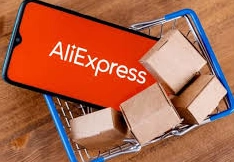In today’s rapidly evolving retail landscape, the dropshipping business model offers a unique approach to eCommerce that emphasizes flexibility and minimal upfront investment. What is dropshipping? It allows retailers to sell products directly to consumers without holding any physical inventory. When a customer places an order, the retailer forwards the order details to a third-party supplier who then ships the product directly to the customer. This model simplifies operations and reduces financial risk, making it an attractive option for entrepreneurs looking to enter the online retail space.
Understanding how dropshipping makes money is crucial for assessing its potential. Retailers typically earn money by marking up the supplier’s cost and charging customers a higher price. Additional income can come from platform fees and marketing expenses. Dive into this article to explore how dropshipping works, its revenue strategies, and what makes it a compelling choice in the world of eCommerce.
What is Dropshipping?
Dropshipping is a retail fulfillment method where the store owner doesn’t keep any inventory in stock. Instead, when a customer places an order, the store owner forwards the order details to a third-party supplier who then ships the product directly to the customer. This means the retailer never physically handles or stores the product, reducing overhead costs associated with inventory management and warehousing.
In a dropshipping model, the retailer earns a profit by marking up the price of products compared to the supplier’s cost. This approach allows entrepreneurs to run an online store with lower upfront investment and less financial risk, as they only pay for goods after making a sale. However, success in dropshipping depends on effective supplier relationships, competitive pricing, and robust marketing strategies to attract and retain customers.
Explore more about Dropshipping At What is Dropshipping an article by our team
A successful dropshipping business effectively combines several key elements
1. Niche Selection
- Definition: Choosing a specific segment of the market that is profitable but not overly saturated with competition.
- Importance: Selecting the right niche ensures that you target a specific audience with a strong demand for products, making it easier to market and sell effectively. A well-chosen niche also reduces competition, allowing you to stand out in the marketplace.
- Example: Instead of selling generic fitness products, focus on eco-friendly fitness gear or products for a particular fitness discipline like yoga or CrossFit.
2. Reliable Suppliers
- Definition: Partnering with suppliers who consistently provide high-quality products, adhere to delivery schedules, and offer competitive pricing.
- Importance: Your reputation hinges on your suppliers. Reliable suppliers ensure that products are shipped on time and meet customer expectations, which helps in building trust and securing repeat business.
- Example: Conduct thorough research or use supplier directories like AliExpress, SaleHoo, or Oberlo to find suppliers with good reviews and proven track records.
You might find it helpful to our team’s article on Alibaba Business Model.
3. Effective Marketing
- Definition: Utilizing various online marketing strategies to attract potential customers to your eCommerce store.
- Importance: Without effective marketing, even the best products may not sell. Strategies like SEO (Search Engine Optimization), social media marketing, and paid advertising (e.g., Google Ads, Facebook Ads) help drive traffic to your site, increase visibility, and ultimately boost sales.
- Example: Create targeted ad campaigns on social media platforms to reach specific demographics that are likely to be interested in your niche products.
Are you curious about what SEO is and how it works? read an article by our team: How does SEO Work
4. Customer Service
- Definition: Providing exceptional support to your customers before, during, and after a sale.
- Importance: Great customer service builds trust, encourages repeat purchases, and leads to positive word-of-mouth marketing. Handling inquiries, returns, and complaints efficiently can significantly enhance customer satisfaction and loyalty.
- Example: Implement live chat support, respond to customer emails within 24 hours, and offer hassle-free return policies to ensure customer satisfaction.
5. Optimized Website
- Definition: Designing and maintaining a user-friendly, visually appealing eCommerce website that offers a seamless shopping experience.
- Importance: Your website is the face of your business. An optimized site that is easy to navigate, mobile-responsive, and quick to load can significantly reduce bounce rates and increase conversions.
- Example: Use platforms like Shopify or WooCommerce to create a professional-looking website, and employ tools like Google Analytics to monitor and improve user experience.
6. Data-Driven Decisions
- Definition: Continuously analyzing sales data, customer feedback, and market trends to make informed business decisions.
- Importance: Making decisions based on data allows you to optimize marketing efforts, adjust pricing strategies, and improve product offerings to better meet customer needs and maximize profitability.
- Example: Use tools like Google Analytics, Facebook Pixel, or your eCommerce platform’s analytics to track performance metrics and make adjustments to your business strategy accordingly.
Dropshipping Suppliers

Dropshipping suppliers are entities that provide products for retailers to sell through a dropshipping model. Retailers using this model do not hold inventory; instead, they send customer orders and shipment details directly to the supplier, who then ships the products directly to the customer.
Types of Dropshipping Suppliers
- Manufacturers: Produce products and offer drop shipping services, often providing competitive pricing and access to exclusive products.
- Wholesalers: Purchase products in bulk and offer drop shipping services, usually providing a wide selection of products at lower prices.
- Distributors: Act as intermediaries between manufacturers and retailers, handling logistics and warehousing.
- Dropshipping Platforms: Online platforms like AliExpress, Oberlo, and SaleHoo connect retailers with a variety of suppliers and simplify the process of finding and working with them.
Popular Dropshipping Suppliers
- AliExpress: A vast marketplace offering a broad range of products with dropshipping options.

- Oberlo: Integrates with Shopify to give access to numerous suppliers and products.

- SaleHoo: A directory of verified suppliers and wholesalers with dropshipping capabilities.
- Doba: Provides access to various products and suppliers, along with order management tools.
Discover more about Shopify: How does Shopify work?
Dropshipping Business Model
Order Process
- Customer Purchase: The customer places an order on the retailer’s eCommerce store.
- Order Forwarding: The retailer forwards the order details to the supplier.
- Supplier Fulfillment: The supplier processes and ships the product directly to the customer.
- Retailer Notification: The retailer receives confirmation and tracking information, which is then communicated to the customer.
Know more about eCommerce Business Model: The Complete Revenue Model Guide You Need to Know
Inventory Management
- Supplier Stock: The supplier maintains inventory levels and manages stock.
- Retailer Focus: Retailers focus on marketing and sales while the supplier handles warehousing and shipping.
- Real-Time Updates: Retailers rely on real-time inventory data provided by the supplier to prevent overselling.
Supplier Relationships
- Manufacturers: Directly produce goods and may offer dropshipping services with competitive pricing.
- Wholesalers: Purchase products in bulk and provide dropshipping to retailers, often at lower prices.
- Distributors: Act as intermediaries between manufacturers and retailers, handling logistics and warehousing.
Platform Integration
- Connecting Retailers and Suppliers: Platforms like AliExpress, Oberlo, and SaleHoo facilitate easy integration.
- Automating Processes: These platforms often offer tools for automatic order forwarding, inventory updates, and product importation.
- Providing Access to a Wide Range of Products: Retailers can browse extensive catalogs and select products to offer in their stores.
How Does Dropshipping Make Money?

Dropshipping makes money through the following methods:
- Product Markup: Retailers set a retail price higher than the wholesale price they pay the supplier. The difference between the retail price and the wholesale price is the retailer’s profit.
- Shipping Fees: Retailers can charge customers for shipping, either as a separate fee or incorporated into the product price. These fees may cover or exceed the cost of shipping, contributing to the retailer’s profit.
- Upselling and Cross-Selling: Retailers can increase their revenue by offering additional products or services that complement the main product. This can include upselling more expensive items or cross-selling related products.
- Subscription Models: Some dropshipping businesses offer subscription services for regular deliveries of products or premium features, generating recurring revenue.
- Private Labeling: Retailers may use private labeling to brand products with their own labels, allowing them to charge higher prices and increase perceived value.
- Bulk Discounts: Retailers may negotiate bulk discounts with suppliers, even though they order in smaller quantities. This allows them to maintain higher profit margins on each sale.
Read more about the Subscription Business Model
Cost Structure
Supplier Costs
- Product Costs: The amount paid to suppliers for each product sold, which typically includes the wholesale price of the item.
- Shipping Costs: Fees charged by the supplier for handling and shipping the product directly to the customer.
- Handling Fees: Additional charges for order processing, packaging, and any special handling requirements.
Marketing Expenses
- Advertising: Costs for running ads on platforms like Google Ads, Facebook, Instagram, etc., to drive traffic to the eCommerce store.
- SEO Costs: Investments in search engine optimization to improve organic search rankings and visibility.
- Content Creation: Expenses for creating engaging content such as blog posts, videos, and images to attract and retain customers.
Facebook Business Model Analysis – How does Facebook Work & Make Money?
How does Instagram make money?
Platform Fees
- eCommerce Platform Fees: Charges for using platforms like Shopify, WooCommerce, or BigCommerce to host and manage the online store.
- Dropshipping Platform Fees: Costs for accessing dropshipping tools and supplier networks on platforms like AliExpress, Oberlo, or SaleHoo.
- Transaction Fees: Fees imposed by payment processors and gateways for processing customer payments.
Operational Costs
- Website Maintenance: Regular expenses for keeping the eCommerce site updated, secure, and functioning smoothly.
- Customer Service: Costs associated with handling customer inquiries, returns, and support through various channels.
- Software Subscriptions: Fees for additional tools and software for managing orders, tracking inventory, and analyzing data.
Future Trends in Dropshipping
Future trends will shape the future of dropshipping, influencing how businesses operate, adapt, and compete in a dynamic marketplace.
You may like to read Marketplace Business Model
Technological Advances:
- AI and Automation: Integration of artificial intelligence for personalized marketing, automated customer service through chatbots, and streamlined order processing.
- Advanced Analytics: Use of big data and analytics tools to gain deeper insights into customer behavior, optimize pricing strategies, and improve inventory management.
- Augmented Reality (AR): Implementation of AR technology to enhance product visualization and improve the online shopping experience.
- Blockchain Technology: Adoption of blockchain for more transparent and secure transactions, and to ensure product authenticity and traceability.
Discover more about Blockchain in How does Blockchain work
Find out more about Chatbot in What is Chatbot?
Market Trends:
- Sustainable Products: Growing consumer demand for eco-friendly and sustainable products, leading to an increase in dropshipping of green and ethical goods.
- Niche Markets: Rise of highly specialized niches driven by consumer interests and trends, allowing for more targeted marketing and product offerings.
- Direct-to-Consumer (DTC) Focus: Increasing preference for brands that sell directly to consumers, bypassing traditional retail channels and reducing reliance on intermediaries.
- Globalization: Expansion into emerging international markets, driven by increased cross-border eCommerce and a growing global consumer base.
TL-DR- Dropshipping Business?
The dropshipping business model allows retailers to sell products without the need to manage inventory. Instead, they forward customer orders to suppliers who handle the shipping process. Retailers make money by marking up product prices and charging customers more than what they pay the supplier. This model minimizes upfront investment and reduces the risks associated with holding stock.
However, dropshipping businesses also face costs such as advertising expenses, platform fees, and other operational costs. As the industry evolves, future trends like technological advancements and shifts in market niches will significantly impact how these businesses operate and generate revenue.
Want to build your own platform like Dropshipping?
If you are interested in developing your own platform like Dropshipping contact us.



Whats the cost of a drop shipping website